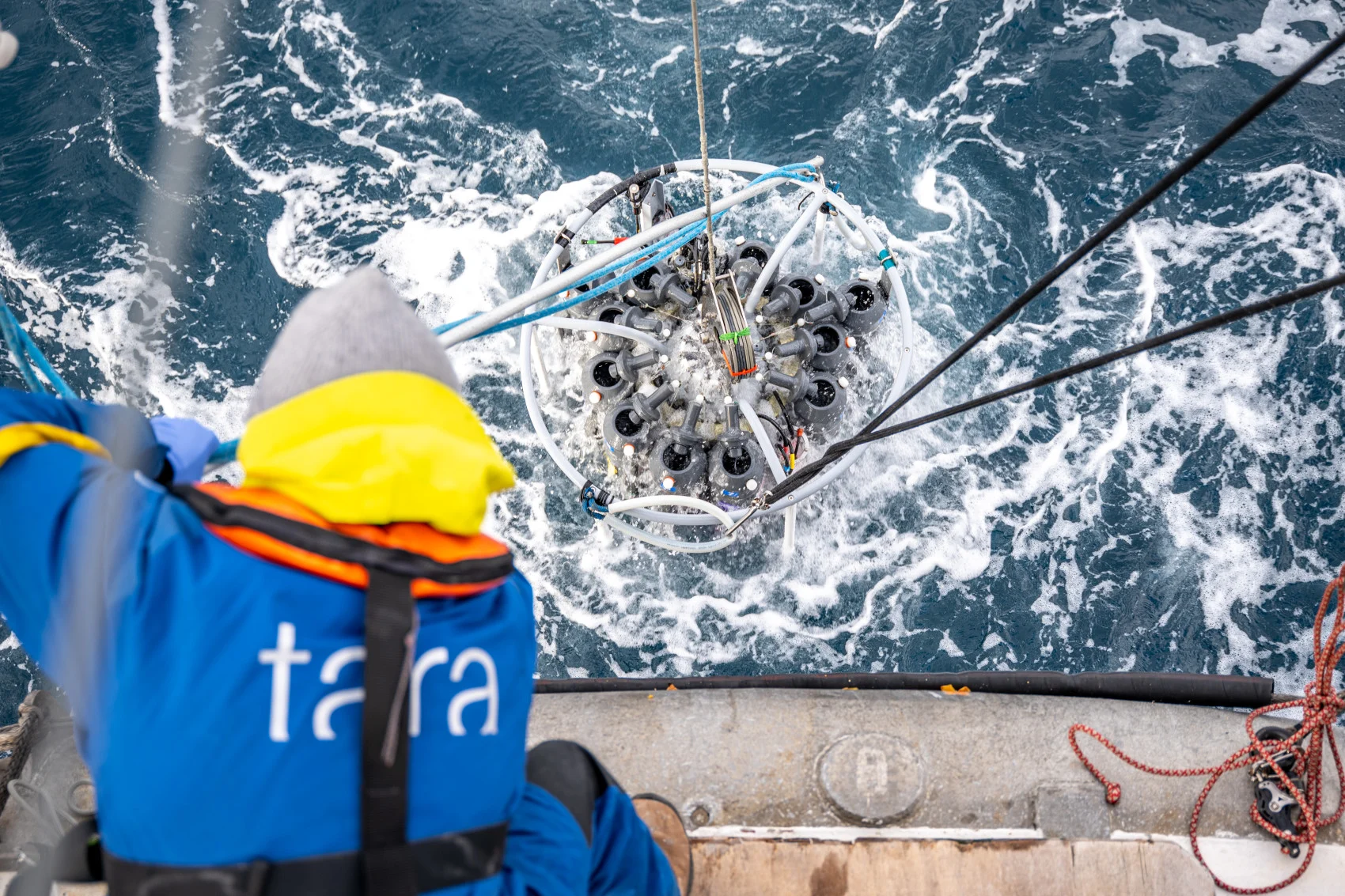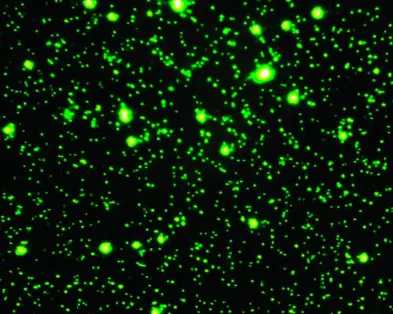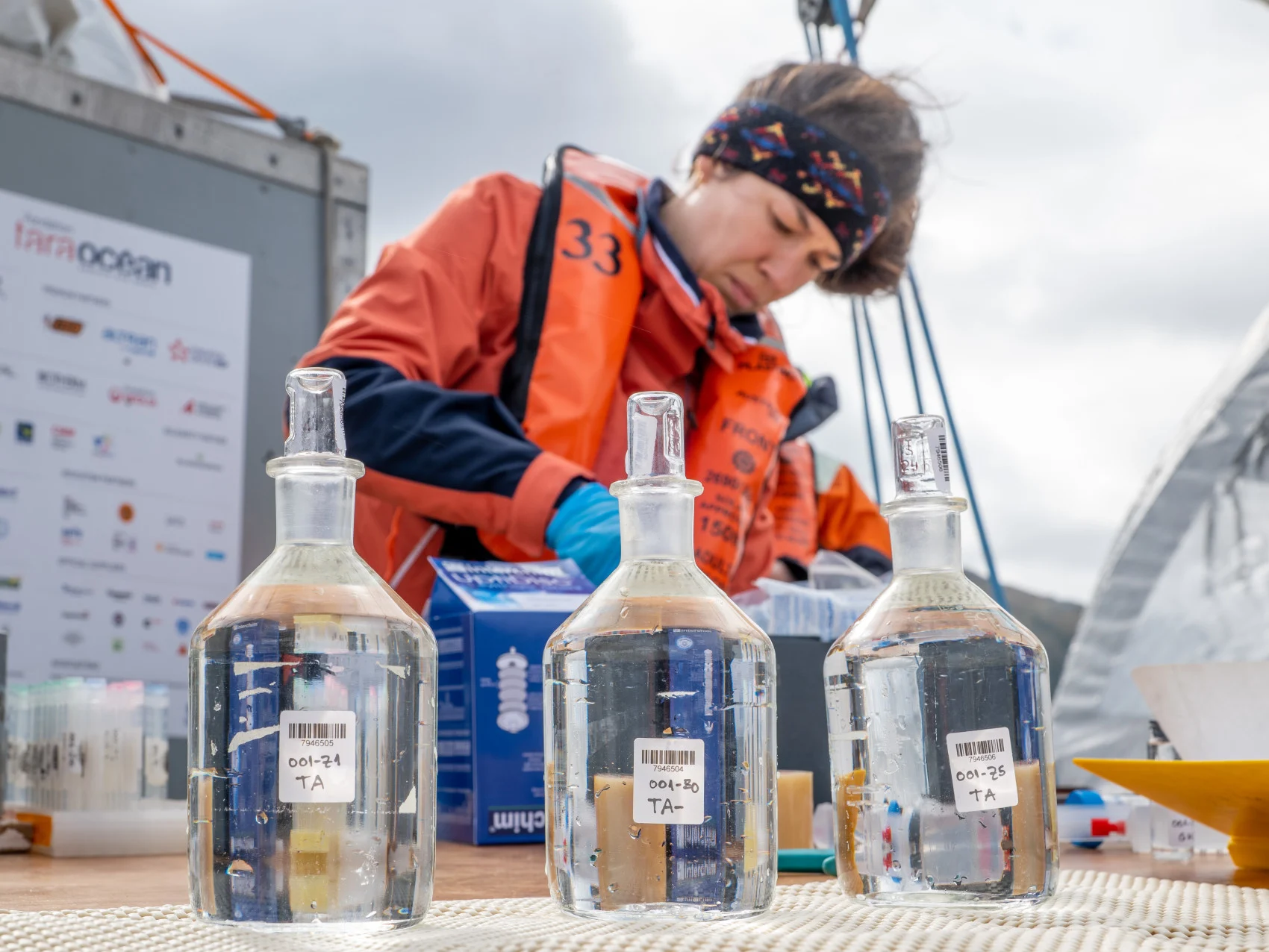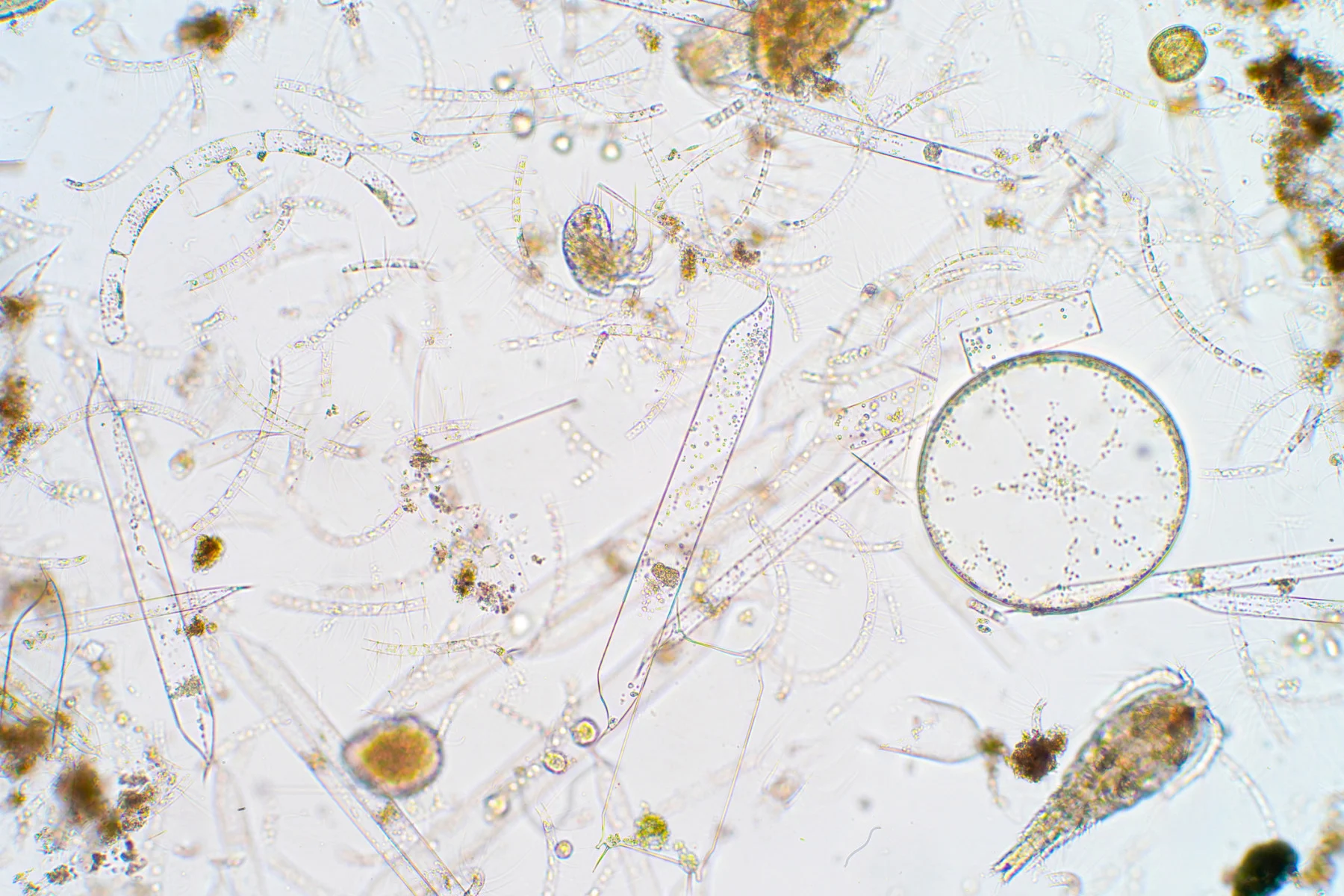
Viruses could help the ocean capture more carbon, researchers say
Over 1,200 viruses in the ocean have the ability to infect marine plants and increase the amount of carbon they capture.
The world’s oceans are saturated with viruses – just one millilitre of seawater contains up to five billion different viruses. Although this may be an unsettling fact, viruses play an essential role in ecosystems and are needed for species to live in balance with the environment.
One untapped characteristic that some oceanic viruses have is their ability to increase the amount of carbon that marine organisms capture from the atmosphere. Researchers from Ohio State University sampled ocean water from extreme depths and found more than 1,200 different viruses that have this carbon-capturing ability.

Viruses and bacteria in a drop of seawater from the Arctic Ocean stained with a fluorescent dye. This image is not affiliated with the study from Ohio State University. (Jerome Payet/ University of British Columbia)
Over several years, 35,000 samples of ocean water around the world were collected by Tara Oceans Consortium, a research initiative that is monitoring the impact climate change is having on the world’s oceans.
Data from the Tara expeditions was featured in the researchers’ study, which reported that the viruses infect plankton and other marine plant species and can increase the amount of carbon that they capture from the atmosphere. It is also noted that these oceanic viruses do not pose a threat to human health.

Ocean water samples are collected by Tara Ocean Foundation so the presence of plastics can be studied. (Maéva Bardy/ Tara Ocean Foundation)
The carbon that is captured by plankton and other photosynthetic organisms remains in their bodies, which eventually sinks down to the ocean floor when they die and is permanently stored on the seafloor.
Up to 90 per cent of the biomass in the ocean is plankton, which is a plentiful resource that could be one strategy to remove excess carbon from the atmosphere. Approximately 45 billion tonnes of new phytoplankton are born each year, which is partly why they are able to capture such significant amounts of carbon.

Microscopic image of phytoplankton. (Choksawatdikorn/ Science Photo Library/ Getty Images)
The researchers say that the viruses could be scaled into a system where they are used alongside technology to control or increase the amount of carbon being captured.
If such a technology is successfully scaled and proven to be effective, “we gain another few hundred or a thousand years from the worst effects of climate change,” Matthew Sullivan, lead author of the study, stated in a press release.
“As humans put more carbon into the atmosphere, we’re dependent on the massive buffering capacity of the ocean to slow climate change. We’re growing more and more aware that we might need to tune the pump at the scale of the ocean,” added Sullivan.
Thumbnail image: Collecting ocean water samples in Antarctica. (Maéva Bardy/ Tara Ocean Foundation)












